Ningbo Zhoushan Port was originally two ports, Ningbo Port and Zhoushan Port. They merged on January 1, 2006.
Ningbo Zhoushan Port is located in Hangzhou Bay, East China Sea, and is a port of Ningbo and Zhoushan in Zhejiang Province, China.
The history of Ningbo Port can be traced back thousands of years. The Tang Dynasty established Mingzhou Port, the Yuan Dynasty was renamed Qingyuan Port, and the Ming Dynasty was renamed Ningbo Port.
Zhoushan was an estuary of China as early as the Tang and Song Dynasties. The Southern Song Dynasty set up the “Zhoushan Ferry”, which was originally called Shenjiamen Port. In April 1987, the three port areas of Shenjiamen, Dinghai and Laotangshan were merged into one port, Collectively known as Zhoushan Port.
In September 2015, Ningbo Zhoushan Port achieved substantial integration.
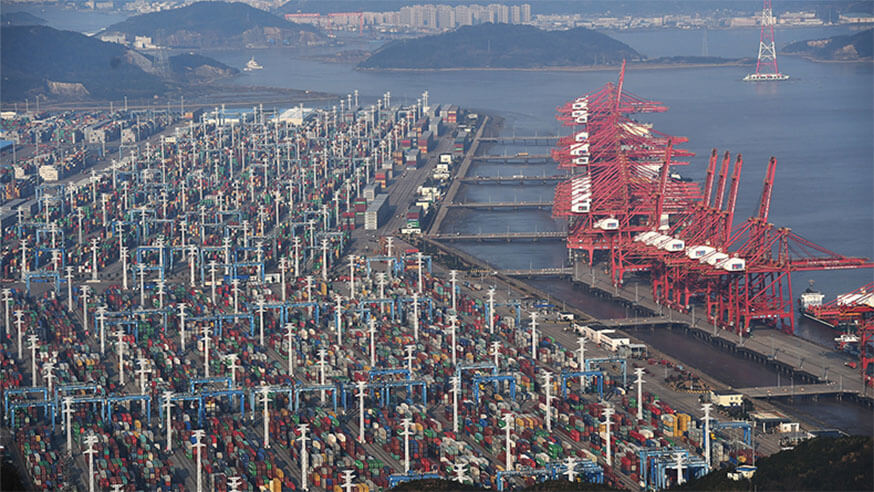
Ningbo Zhoushan Port is composed of 19 port areas including Beilun, Yangshan, Liuheng, Qushan and Chuanshan. It has a total of more than 620 production berths, including nearly 160 large berths above 10,000 tons and large, special There are more than 90 large-scale deep-water berths.
As of June 2018, Ningbo Zhoushan Port has a total of nearly 250 container routes, including more than 120 ocean routes, with an average monthly flight of about 1,500 flights.
In 2019, Ningbo Zhoushan Port completed a cargo throughput of 1.119 billion tons, ranking first in the world for seven consecutive years;
In 2019, Ningbo Zhoushan Port completed container throughput of over 27.53 million TEU.
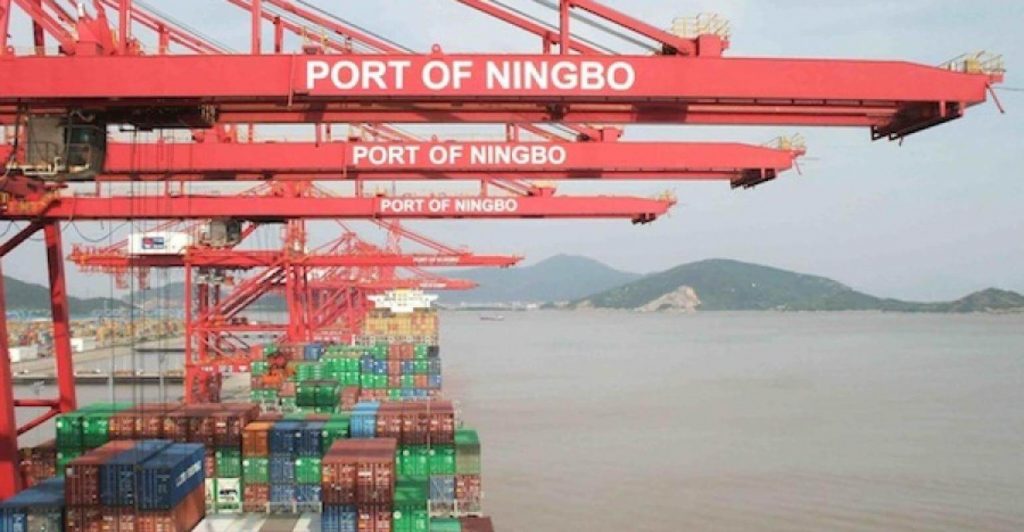
Ningbo Zhoushan History
Ningbo Port was established in 738 during China’s ancient history. During the Tang Dynasty (618-907), it was known as one of the three major seaports for foreign trade under the name “Mingzhou”, along with Yangzhou and Guangzhou.
In the Song Dynasty, it became one of the three major port cities for foreign trade, together with Guangzhou and Quanzhou.
It was designated as one of the “Five Treaty Ports” along with Guangzhou, Xiamen, Fuzhou and Shanghai after the 1842 Treaty of Nanking that ended the First Opium War.
In 2006, the Port of Ningbo was merged with the neighboring Port of Zhoushan to form a combined cargo handling center. The combined Ningbo-Zhoushan Port handled a total cargo volume of 744,000,000 metric tons of cargo in 2012, making it the largest port in the world in terms of cargo tonnage, surpassing the Port of Shanghai for the first time.
On the afternoon of May 1, 2020, Ningbo Zhoushan Port officially opened the New Highest level container berth in China.
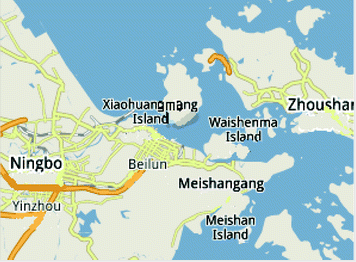
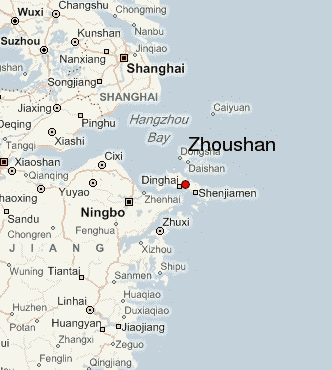
Hardware facilities
channel
As of 2016, Ningbo Zhoushan Port has a total of 40 waterways of different levels, and Ningbo Port and Zhoushan Port share a waterway.
Main waterways in Ningbo Port
| Channel name | Channel size | Channel name | Channel size |
| Into the Yongjiangkou Channel | 50,000 tons two-way | Xiangshan Port Waterway | 35,000 tons |
| Shipu Port Fairway | 5000 tons | Meishan Inlet Channel | 100,000 tons |
| Yongjiang Waterway (outer waterway) | 3000 tons | Xiangshan Port Waterway | 1000 tons (passenger) |
| Long Waist Jianjiang Waterway | 5000 tons | Oxbow River Waterway | 1000 tons |
| Jintang Waterway | 300 thousand tons | Fodu waterway | Full tide navigation for 120,000-ton tankers, container ships below 100,000-ton and 150,000-ton ships for tide |
| Xiawanmen Waterway | 5000 tons two-way | Tongwanmen Waterway | 3000 tons two-way |
| Broom door main channel | 150,000 tons two-way | —— | —— |
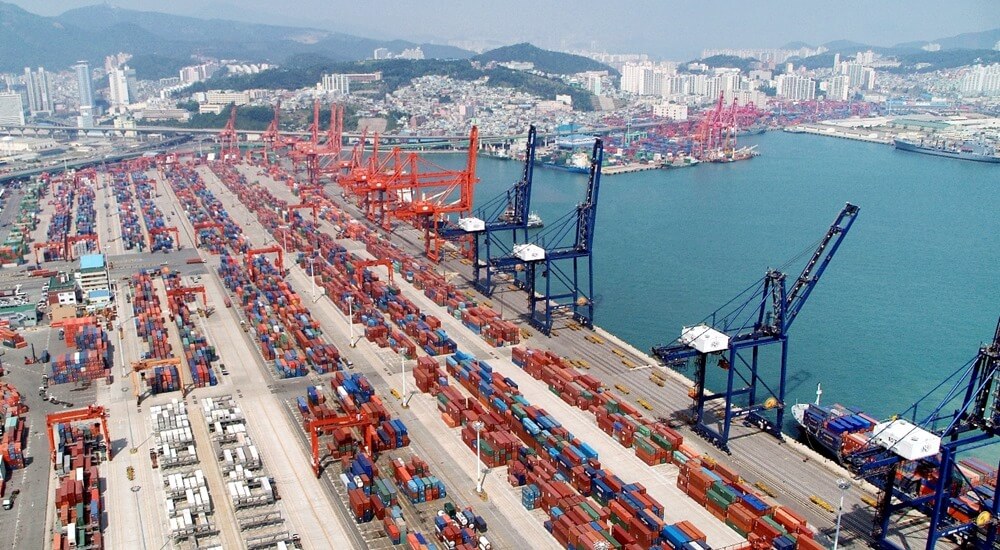
The main waterway of 100,000-ton class and above in Zhoushan Port
| Channel name | Channel size | Channel name | Channel size |
| Broom door main channel | 150,000 tons | Broom gate branch channel | 250,000 tons |
| Shrage gate artificial waterway | 300 thousand tons | Ship routing system in core port area | 300 thousand tons |
| Usha Waterway-Welfare Gate Waterway | 150,000 tons | Clearsgate fairway | 150,000 tons |
| West Crab Channel | 100,000 tons | Waterway on the south side of Laotangshan Port Area | 100,000 tons |
| Inlet Channel of Cezi Island | 300 thousand tons | Ma’ao Port District Outer Section of Inlet Channel | 100,000 tons |
| Ma’ao Port Area Inlet Channel Inlet Gate Channel | 100,000 tons | Into the Daishan Waterway Fairway | 300,000 tons of no-load |
| Into the Changbaishui Channel | 300,000 tons of no-load | Majishan Inlet Channel | 300 thousand tons |
| Majishan Transit West Passage | 300 thousand tons | Majishan Transit East Fairway | 300 thousand tons |
| Majishan Transit Foreign Channel | 300 thousand tons | Inner Harbor Channel in Majishan Operation Area | 300 thousand tons |
| Majishan Inlet Channel | 300 thousand tons | Maji Mountain Transit Channel | 300 thousand tons |
| Luhuashan Inlet Channel | 300 thousand tons | Inlet Channel of Yangshan Port Area | 150,000 tons |
| Yangshan Inlet Branch Channel | 100,000 tons | Toho Shipbuilding Channel | 300,000 tons of no-load |
| Foreign route | 300 thousand tons | East Airway | 300 thousand tons |
| Zhonghanglu | 300 thousand tons | —— | —— |
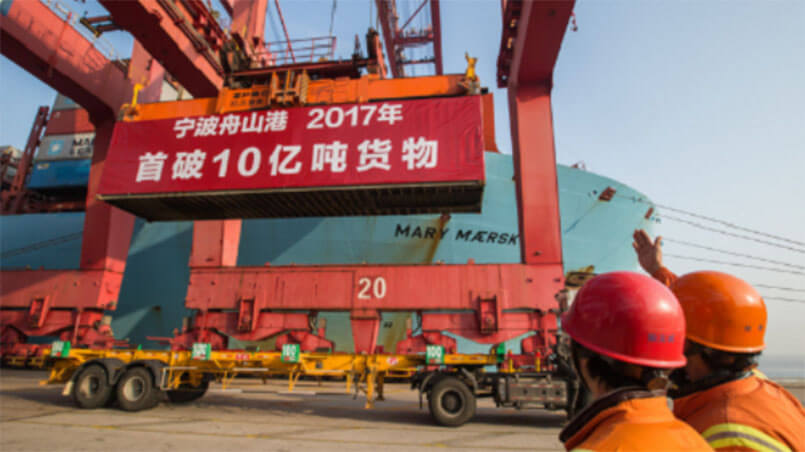
Anchorage
As of 2016, Ningbo Zhoushan Port has more than 50 anchorages, of which Ningbo Port has 11 anchorages, and the rest are owned by Zhoushan Port.
There are 44 anchorages in the southern sea area of Zhoushan Port, including 11 anchorages above 200,000 tons, 8 anchorages between 100,000 and 200,000 tons, and 16 anchorages between 10,000 and 100,000 tons, and 0.1 to 10,000. There are 5 anchorages at the ton level, and 4 anchorages at the 10,000 ton level.
berth
Ningbo Zhoushan Port has a total of more than 620 production berths, of which there are nearly 160 large berths above 10,000 tons, and more than 90 large and extra large deep water berths above 50,000 tons.
As of 2017, Ningbo Zhoushan Port Ningbo Port has 329 productive berths, including 322 coastal berths and 7 inland berths.
There are 106 berths above 10,000 tons.
There are 109 berths for dangerous goods in ports, including 69 berths above 10,000 tons.
There are 19 passenger berths in Ningbo, including 3 directly under the jurisdiction of Ningbo, 7 in Beilun, 2 in Ninghai, and 7 in Xiangshan.
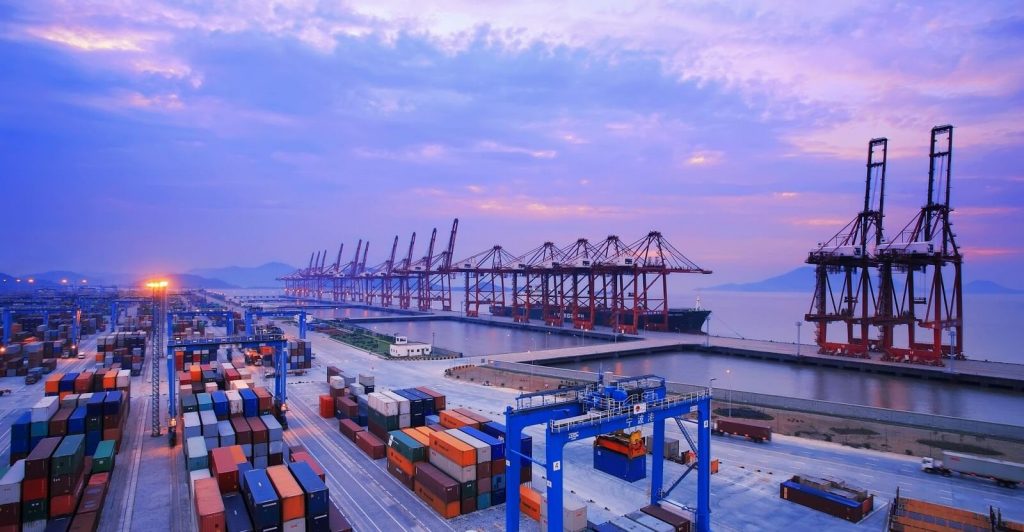
Warehousing
As of 2017, Ningbo Zhoushan Port Ningbo Port has a total of 428 dangerous goods storage tanks, 4.44 million cubic meters.Ningbo Zhoushan Port Ningbo Port has a total of seven dangerous cargo container yards, located in Zhenhai, Beilun, Daxie and Meishan.
Production Data
| index | Year 2014 | 2015 | 2016 | 2017 | 2018 | 2019 |
| Cargo throughput(100 million tons) | 8.73 | 8.89 | 9.22 | 10.1 | 10.8 | 11.19 |
| Container throughput (ten thousand TEUs) | 1945 | 2063 | 2156 | 2461 | 2635 | 2753 |
| Passenger throughput(10,000 people) | 161.5 | 158.9 | 147.77 | 150.98 | — | — |
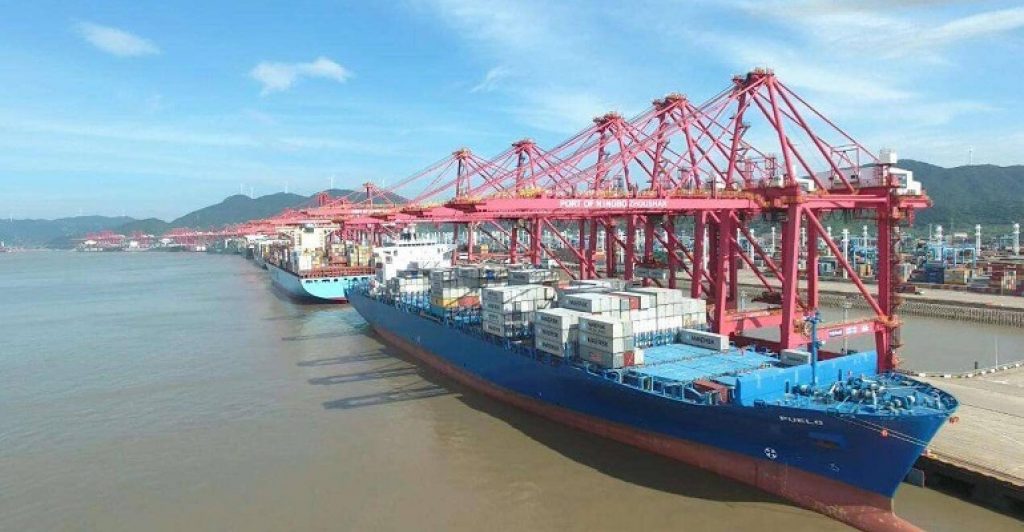
Ningbo Zhoushan Port Data
- Country
- China
- Location
- Hangzhou Bay, Ningbo & Zhoushan, Zhejiang
- Status
- In use
- Operator(s)
- Ningbo Zhoushan Port Co., Ltd.
- Port type
- Deepwater seaport, Riverport
- Features
- Natural port, Artificial port
- Region
- East Asia
- Sea area
- East China Sea
- Year of opening
- 738 AD
- Industrialization date
- 1842
- Annual container volume
- 27.6 million TEU (2019)
- Annual container volume
- 1.119 billion tons(2019)
View Ningbo Zhoushan Port on Google Satellite Map
Google satellite maps allow you to see building details more clearly, including natural landscapes such as mountains, rivers, deserts, sea and man-made engineering buildings.
If you are very interested in this engineering building, it is a good idea to click below Google Map icon. We will help you jump to the corresponding location of this building or engineering on Google satellite map.






























































